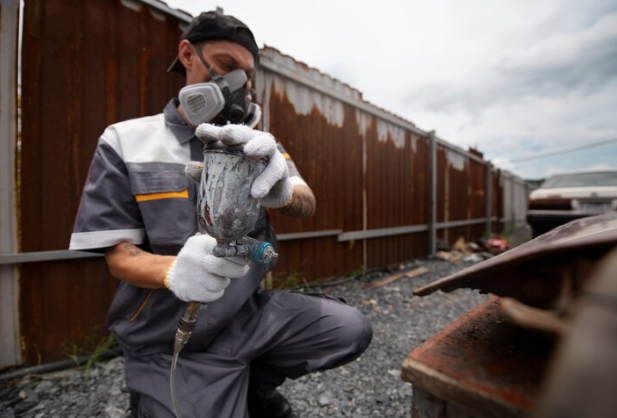Asbestos, a naturally occurring mineral once prized for its versatility and durability, is now recognised as a serious health hazard due to its link to respiratory diseases such as mesothelioma, lung cancer, and asbestosis. Asbestos-containing materials (ACMs) were commonly used in construction and insulation until the late 20th century, posing a significant risk to individuals exposed to airborne asbestos fibers. In Melbourne, where older buildings may still contain asbestos, proper asbestos removal is crucial for protecting public health and safety. In this article, we’ll delve into ten key facts about asbestos removal to increase awareness and understanding of this important process.
1. Asbestos Awareness
Understanding the dangers of asbestos exposure is the first step in effective asbestos removal. Asbestos fibers, when disturbed or damaged, can become airborne and easily inhaled, leading to serious health consequences. Asbestos-related diseases often have a long latency period, meaning symptoms may not manifest until years or decades after exposure. As such, it’s essential for property owners, contractors, and residents in Melbourne to be aware of the risks associated with asbestos and the importance of proper removal procedures.
2. Professional Assessment
Before initiating any asbestos removal work, it’s essential to conduct a thorough assessment of the property to identify the presence of asbestos-containing materials. In Melbourne, certified asbestos assessors can inspect buildings and materials for asbestos and provide accurate assessments and recommendations for removal or management. This initial assessment is critical for ensuring the safety of workers and occupants and determining the scope and cost of asbestos removal projects.
3. Licensed Removal Specialists
Asbestos removal is a highly specialised process that should only be undertaken by licensed and experienced professionals. In Melbourne, asbestos removal specialists undergo rigorous training and certification to safely and effectively remove asbestos-containing materials. These specialists have the necessary knowledge, skills, and equipment to handle asbestos removal projects of all sizes and complexities while adhering to strict safety regulations and guidelines.
4. Safe Handling and Disposal
Proper handling and disposal of asbestos-containing materials are paramount to prevent the release of harmful fibers into the environment. During removal, asbestos specialists employ containment measures such as wetting materials and using sealed enclosures to minimise the spread of asbestos fibers. Once removed, asbestos waste is securely packaged and transported to licensed disposal facilities equipped to handle hazardous materials. Following proper disposal procedures is essential for protecting public health and the environment.
5. Regulatory Compliance
Asbestos removal in Melbourne is governed by strict regulations and guidelines established by government authorities such as WorkSafe Victoria and the Environment Protection Authority (EPA). These regulations outline requirements for asbestos removal licensing, training, work practices, and waste disposal. Compliance with these regulations is mandatory to ensure the safe and lawful removal of asbestos and minimise the risk of exposure to asbestos fibers.
6. Notification Requirements
Property owners and contractors undertaking asbestos removal projects in Melbourne are required to notify relevant authorities and stakeholders before commencing work. Notification requirements may vary depending on the scale and nature of the removal project and must be adhered to in accordance with regulatory guidelines. Proper notification ensures that appropriate measures are in place to protect workers, occupants, and the surrounding community from asbestos exposure.
7. Potential Health Risks
Exposure to airborne asbestos fibers can pose significant health risks, including respiratory diseases such as mesothelioma, lung cancer, and asbestosis. These diseases can develop years or even decades after exposure, making early detection and prevention crucial. Minimising exposure to asbestos fibers through proper removal and containment procedures is essential for protecting the health and well-being of workers and occupants in Melbourne.
8. Risk Assessment and Management
Asbestos removal projects require comprehensive risk assessment and management to identify potential hazards and implement appropriate control measures. This includes assessing the condition and location of asbestos-containing materials, determining the level of exposure risk, and developing strategies to minimise exposure during removal activities. Risk management plans should be tailored to the specific needs and circumstances of each project to ensure effective hazard control and worker safety.
9. Air Monitoring and Clearance Testing
Air monitoring and clearance testing are integral components of the asbestos removal process to verify that airborne asbestos levels are within acceptable limits following removal activities. Certified asbestos assessors conduct air monitoring throughout the removal process to assess fiber levels and ensure that containment measures are effective in preventing fiber release. Clearance testing is conducted after removal to confirm that the area is safe for reoccupation and that asbestos fibers have been adequately removed.
10. Ongoing Maintenance and Monitoring
Once asbestos removal is complete, ongoing maintenance and monitoring may be necessary to prevent recontamination and ensure long-term safety. Property owners should implement measures to prevent damage or disturbance to remaining asbestos-containing materials and regularly inspect and maintain building components to detect potential hazards. Additionally, periodic air monitoring and asbestos surveys may be conducted to assess the effectiveness of control measures and ensure continued compliance with regulatory requirements.
Conclusion:
In conclusion, asbestos removal is a complex and highly regulated process that requires careful planning, expertise, and adherence to strict safety protocols. By understanding these ten key facts about asbestos removal, property owners, contractors, and residents in Melbourne can make informed decisions to protect public health and safety and mitigate the risks associated with asbestos exposure. Prioritising professional assessment, licensed removal specialists, regulatory compliance, and ongoing monitoring is essential for ensuring the safe and effective removal of asbestos-containing materials and safeguarding the health and well-being of communities.





